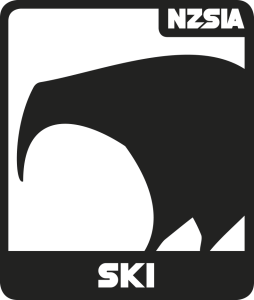Basic Parallel Turns with a Pole Touch
 What, Why, How
What, Why, How
What
A pole touch is a swing of the pole from the wrist and forearm. The tip of the pole touches the snow downhill from the skier during the release phase of the turn.
Why
Adding the pole touch gives skiers stability and provides rhythm and flow. A well-timed pole touch will also aid the other movements, allowing skiers to adapt their turn shape and attempt more challenging terrain.
How
First, look at how to hold the pole and make a pole swing. Then, develop where the pole touch happens in relation to the skier – always downhill. Develop the timing of when the pole touch happens in relation to the turn the skier is making.
VIDEO: Pole Swing & Touch with Emily Pocock
 Technical Know-how
Technical Know-how
What’s New
Students learn to use their poles to help all areas of their skiing and to develop better all-mountain skiing skills.
Performance Tips
Body: Focus on gripping the pole with all of the fingers, making sure to hold the pole firmly as the swing and touch take place.
Turn phases: The pole swing begins in the middle of the control phase, and the touch happens towards the end of the release phase.

Skills
Situational Understanding
- Maintain a basic parallel speed to allow enough time for the pole swing and touch to take place
- Use blue terrain
- Develop awareness of the timing of the pole swing and pole touch in the turn. The pole swing happens through the control phase of the turn; the pole touch happens in the release phase of the turn
- Having a well-timed and accurate pole swing and touch will allow skiers to explore different, more challenging terrain
Active Stance & Balance
- Use controlled movement of the forearm and wrist to swing the pole
- Stabilise the outside arm once the pole has touched the snow. The skier should ski past the pole touch without dropping the outside arm behind their body
- Maintain a strong hand position with both hands wider than the torso and in front of the belly button
Outside Ski Balance
- Use the timing of the pole touch to begin the weight shift to the new outside ski
- Angulation will develop as the pole swings
Edging
- Use the timing of the pole swing to continue lateral movements of the legs, creating higher edge angles
- Use the timing of the pole touch to flatten the skis
Steering
- Use the timing of the pole touch to unwind the legs and steer them towards the new turn
- Use the timing of the pole swing to continue steering the legs, controlling the size of the turn
Ski Snow Interaction
- Both skis will create matching steering angles from the beginning of the turn. These angles will increase until the middle of the control phase where they will be maintained until the end of the turn
- The edge angle of both skis will increase throughout the turn, and release simultaneously
- The platform angle will reach 90 degrees at the end of the control phase in a parallel turn. This creates more grip and a slight groove for the skis to travel along as they release and helps the skier continue to maintain a parallel relationship with the skis as they start the turn
 Teaching Tactics
Teaching Tactics
Terrain
Ideally introduced on blue terrain where the students are comfortable.
Class Handling
It is not uncommon for students to make great developments when you are getting them to think about the positive actions that they are making with their skis and their legs etc and then you add in a pole touch and it all becomes too much. Students will have a “right time” to add in a pole touch; if you start teaching it and then find it complicates things, don’t be afraid to pull away and teach it another day.
Example Activities
- Show what a pole touch is and try it
- Show how to hold the pole, and how to use wrist and forearm to make the pole swing
- Encourage good arm and hand carriage
- Show students where to touch - always downhill
- Give imagery of where to touch in relation to the outside ski
- Develop timing of pole swing and touch
- Develop anticipation and preparation of the pole swing and touch
- Talk, show, feel the benefits of a well-timed pole swing and touch

